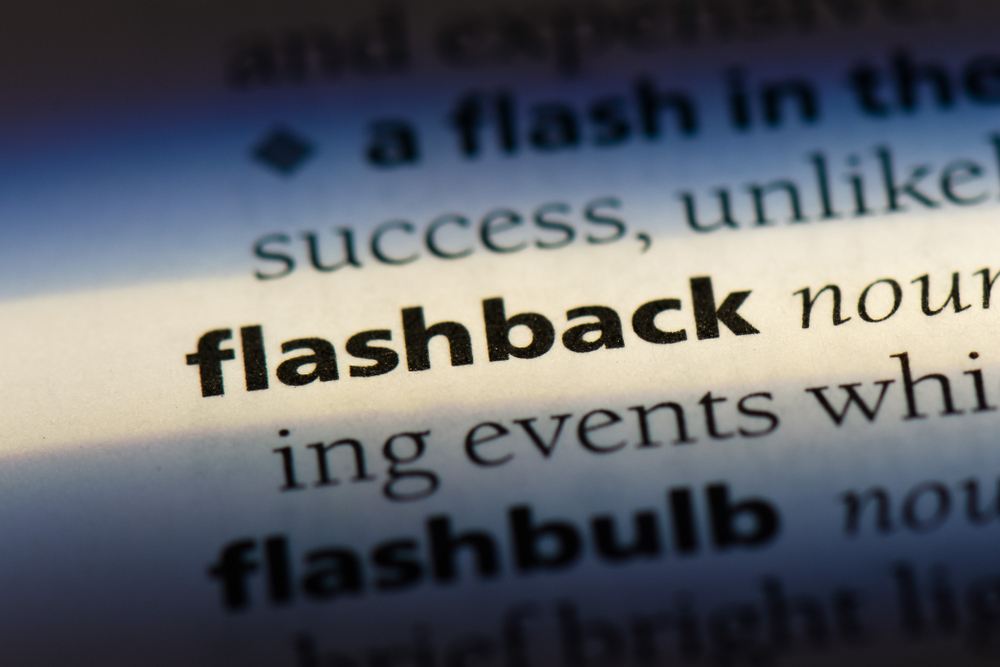How to Write a Flashback Scene
You’re running along a dark corridor, panting and out of breath. You hear the thud of a heavy pair of boots slowly making its way down the deserted hall. You haven’t felt this terrified since- and suddenly you’re transported back in time to when you were ten years old, hiding in the bathroom, listening to the sound of your father’s drunken footsteps thudding as he screams out your name. But how did you get here?
You’ve entered a flashback, of course.
Writing flashbacks can be an incredibly difficult art. Flashbacks often become an unwelcome crutch for novice writers, serving as the sole medium through which we find out about our protagonist’s past. But, in actuality, a flashback scene is only meant to be used in extremely specific circumstances. For those struggling to find that happy balance between past and present, here are some tips to help:

1) Do you really need a flashback?
Although you, as the writer, will have very clear pictures of the various events and memories leading up to your protagonist’s present circumstances, that doesn’t always mean they should be included in your story. Novels and short stories that rely heavily on flashbacks are widely considered weak and ineffective. This is because of one of the main pitfalls of using flashbacks: the events have already happened. A strong story focuses on the present circumstances of a character and the conflict that lies in their circumstances. There is no immediate sense of urgency or suspense inherent to something that happened years prior to the present events in which the reader is invested.
Therefore, a flashback is only to be used in cases where the reader is gaining something from living out a memory that they wouldn’t be able to gain through exposition. Allow us to give a few examples. Let’s say you want to detail that your protagonist had a loving relationship with his deceased mother through the memory of them having a conversation while watching a film together. The day you’re choosing isn’t an emotional/dramatic or life-changing scene for your protagonist, it’s merely to illustrate the nature of their relationship. In this case, we recommend summarizing the events of that memory rather than jumping into a flashback.
On the other hand, when a memory is emotional or depicts a crucial moment that largely or wholly informs the person that your protagonist is in the present…this is the only case where a flashback should be used. Let’s say your protagonist once saw their sister drown in a lake at a young age. You can’t very well summarize an event or scene like this. Not only would that be jarring to read, but it wouldn’t do justice to the full emotional impact of the event and how it informs your protagonist and their decisions in the present tense.
So, when you’re considering whether a flashback is needed, ask yourself – Do the events in this memory have a huge life-long impact on my protagonist? Do they largely or wholly inform their decisions in the present tense? If your answer is ‘no,’ don’t use a flashback.
2) Focus on ‘the now’ and build suspense
As stated previously, the main focus of your novel or short story should be on the action in the present tense. Therefore, possibly the worst thing you could do is to start your story with a flashback scene. Not only will that confuse the reader as to what ‘the now’ of the story is, but they also have no context for the flashback. A flashback is meant to provide an explanation for specific character traits or flaws. You must spend time establishing your character thoroughly first, making your reader wonder why the character is a certain way, in order for the flashback to have any sort of payoff.
Writers often make the mistake of thinking the reader needs to immediately understand everything about their protagonist- their past, who they are, why they are the way they are, etc. But this isn’t the case at all. Although you should quickly establish who your character is now, your reader doesn’t immediately need to know who they were. In fact, creating a sense of suspense and mystery around your character’s past will make your pivotal flashback scenes even more effective. Though flashbacks don’t have any immediate sense of urgency, by building up to them, you create that sense of urgency that they inherently lack. A pro-tip for creating this is to pepper in little parts or flashes of the memory throughout the story leading up to the flashback. For example, let’s say the memory has something to do with a bar. Perhaps your character smells a certain kind of alcohol in the present and then hears the voice of one of their friends in their head (a friend from the memory). This will keep the reader intrigued, wondering when these scattered details will be explained.

3) Use external triggers
Transitioning in and out of a flashback is an extremely difficult art and must be handled with great care. One of the biggest mistakes writers make with these transitions is to give no context to them. These memories that the reader is witnessing can’t come out of absolutely nowhere. Like everything else in your story, they must be informed (in some way) by the present action of the story. So it must feel like we’re seeing this memory because the protagonist is reliving it.
The best way to smooth the initial transition in and out of the flashback is to use external triggers. For example, as previously stated, perhaps the protagonist smells a certain type of alcohol that transports him into his memory. Or maybe she sees a woman in a red coat that looks exactly like her sister. They need to have a reason for being sucked back in time in this very vivid sense.
And, just like they need a reason to go back, they need one to come back to the present. So perhaps a horn honking, a door slamming, or someone calling their name. Think about moments where you’ve slipped into daydreams and what external forces have pulled you back to reality.
4) Don’t confuse your readers
When you’re transitioning into a flashback, the last thing you want is for a reader to be unable to tell you’ve gone back in time. This is such a clear indication of an amateur writer and will likely lose you a lot of readers (out of pure frustration). To avoid confusion, it’s important to quickly alert your reader as to the shift in time, where we’ve shifted to, where in space we are, and who is present that matters to the story. One great example of this technique in action comes from the novel Sleeping Dogs by Thomas Perry:
All his old habits came back automatically. At a glance he assessed [everyone’s] posture and hands. Was there a man whose fingers curled in a little tremor when their eyes met, a woman whose hand moved to rest inside her handbag? He knew all the practical moves and involuntary gestures, and he scanned everyone, granting no exceptions. He and Eddie had done a job like this one when he was no more than twelve. Eddie had dressed him for baseball, and had even bought him a new glove to carry folded under his arm. When they had come upon the man in the crowd, he hadn’t even seen them; his eyes were too occupied in studying the crowd for danger to waste a moment on a little kid and his father walking home from a sandlot game. As they passed the man …
Another helpful transition technique that Perry utilizes here is using verb tense changes to alert the reader of the shift. The transition is easier for those who are writing their story in present tense, but for those who chose past tense conveying a shift in time back further can be more challenging. We recommend using Perry’s technique of switching from past tense to past perfect to ease the initial transition in and out of the flashback. In the present, he’s using phrases like ‘he knew’ and ‘he scanned’. But, in his initial transition, he begins using phrases like, ‘had done’ and ‘had bought’.
5) Focus on the details
It’s also important to keep in mind, when you shift to the past, that the details should change. If this is a childhood memory, your protagonist should be experiencing the scenes using clearly more infantile observation skills. If this is a drastic jump in time, include details that are relevant to the time period to which we’ve shifted. Even if you’re writing a fantasy book, you must consider how the society/world at large is different in this flashback as opposed to the present. If this flashback is depicting an event that changed the protagonist’s personality drastically, show the reader how they were different before the event occurred.

6) Keep it brief and infrequent
In the circumstances where it’s necessary to use a flashback, make sure they’re brief and only include important information. So, for example, let’s say this is the sister drowning scenario. The flashback shouldn’t begin earlier in the day with our protagonist hanging out with her sister if nothing important occurred then. Begin, instead, with the lake scene or the girls walking to the lake.
But, ultimately, we really can’t stress enough how infrequent your flashback scenes should be. Focus on the present and use these as a tool if and only if the reader witnessing the events of the flashback is crucial to understanding the protagonist and their decisions in ‘the now’ of the book. Otherwise, give your flashbacks the dreaded ax.

